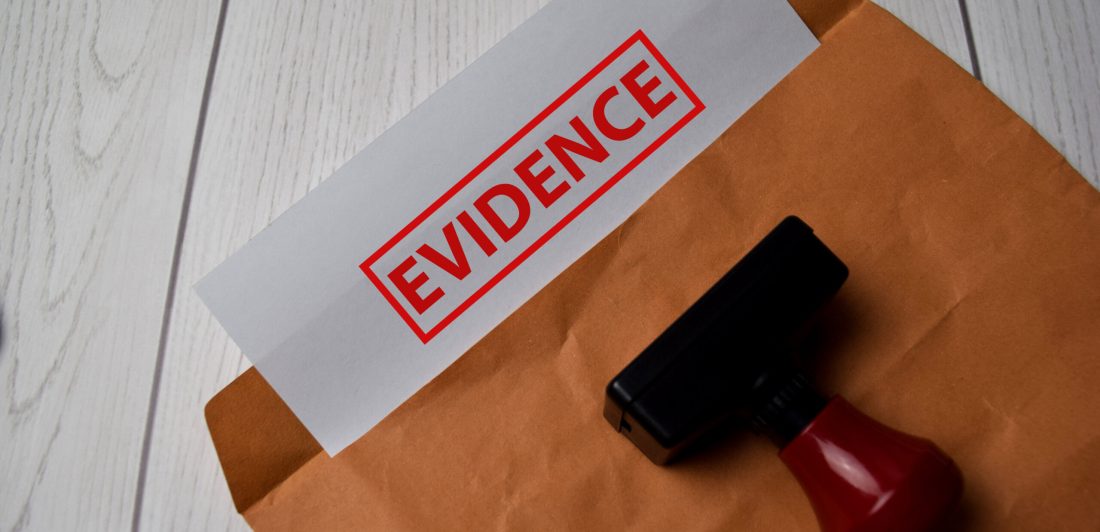Over the last several decades, media around the practice of law has presented some of the most famous and compelling stories in history. From classic literature like To Kill A Mockingbird, to gripping films like A Few Good Men, to binge-worthy TV shows like Suits, the legal system presents plenty of opportunities for stories that many people find fascinating. Although many of these media depictions of law aren’t totally accurate, one idea they present is correct: the necessity of evidence.
But how does the presentation of evidence in a trial work in real life? Who is responsible for gathering the evidence to prove their case? What is the difference in the amount of evidence necessary for different cases? The answer lies in one key term: burden of proof.
What is “Burden of Proof?”
“Burden of proof” is the legal standard that describes which party is required to bring forth evidence and what level of evidence they must provide to determine if the claim is legally valid. To guarantee that legal decisions are based on facts and evidence instead of conjecture, the law requires that one party, usually the one filing a claim, carry the burden of proof. This essentially means that the party carrying the burden of proof has the responsibility to prove that the claim is legally valid.
What are Evidentiary Standards for Burden of Proof?
There are three evidentiary standards for burden of proof that state what amount of evidence is necessary to successfully prove a claim. Each standard applies in different types of cases. The three standards are: “preponderance of the evidence,” “clear and convincing,” and “beyond a reasonable doubt.
Preponderance of the Evidence
The first standard, “preponderance of the evidence,” is the least strenuous evidentiary standard. It usually applies to civil cases where the plaintiff is seeking financial compensation. Under the preponderance of the evidence standard, the party with the burden of proof must provide enough evidence to show that there is more than a 50% chance that the claim is true.
The preponderance of the evidence standard typically applies in cases where plaintiffs are suing for recovery of damages like medical bills, lost wages, property damage, etc.
Clear and Convincing
The “clear and convincing” standard is the middle ground between the preponderance of the evidence standard and the beyond reasonable doubt standard. Under the clear and convincing standard, the party with the burden of proof must provide enough evidence to show that the claim is “substantially more likely than not to be true.” This standard is used in some types of civil cases as well as criminal cases.
In civil cases, this standard may apply when the plaintiff sues for something intangible, such as job discrimination. In criminal cases, the clear and convincing standard could apply in cases dealing with issues like fraud.
Beyond a Reasonable Doubt
The last standard, “beyond a reasonable doubt,” is the most strenuous evidentiary standard. Used in criminal cases, this standard requires that the party bearing the burden of proof must provide evidence to show that the claim being brought forward is the only reasonable explanation for what has occurred.
This standard mainly applies in criminal cases, as it is designed to protect those being accused of crimes. Under the beyond a reasonable doubt standard, the prosecution must show that the only logical explanation for the event that occurred was that the defendant committed the alleged crime.
How Does the Burden of Proof Differ in Civil and Criminal Cases?
While the concept behind the burden of proof is the same in civil and criminal cases, there are a couple of differences in how the burden of proof applies.
Burden of Proof in Civil Cases
To clarify, civil cases are non-criminal lawsuits between two or more parties. In civil cases, the plaintiff, or the person bringing the suit, bears the burden of proof. Typically, the standard that must be met is preponderance of the evidence, which is the least strenuous standard. By this standard, the plaintiff must provide enough evidence to convince the judge and jury that the claim has more than a 50% chance of being true rather than not.
Burden of Proof in Criminal Cases
A criminal case is brought by the local, state, or federal government against a person for committing a crime. The prosecution, or the party charging the defendant with the crime, bears the burden of proof in criminal cases. Because criminal cases have such serious consequences that can take away a person’s freedom, the law requires the strictest standard, beyond a reasonable doubt. Under the beyond a reasonable doubt standard, the prosecution must bring forth enough evidence to prove that the only reasonable explanation for what occurred was that the defendant committed a crime.
The Carlson Law Firm Can Help
Whether you’re involved in a lawsuit dealing with civil or criminal matters, it’s best to have an expert you can trust by your side. We have been serving our community for over 40 years, providing expert legal services with the care and compassion that our clients deserve.
If you need representation in a civil or criminal matter, don’t wait to contact an attorney that cares. We offer free consultations, and we’re available 24/7. We care, and we can help.




